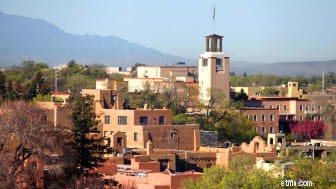
은퇴를 생각할 때 가장 큰 질문은 은퇴 시점입니다. 또는 은퇴하는 데 얼마나 많은 돈이 필요합니까? 하지만 은퇴할 곳 똑같이 시급한 문제가 될 수 있습니다. 실제로 Merrill Lynch와 Age Wave(고령화에 초점을 맞춘 연구 기관)의 조사에 따르면 퇴직자의 37%는 이미 퇴직했으며 27%는 이사할 계획입니다. 은퇴를 계속할 계획이 있는 다른 사람들 중 하나라도 새로운 삶의 단계에 들어서면 주변 세상이 바뀌고, 거주 국가에서 알을 어떻게 대하는지 재평가해야 할 수도 있습니다.
은퇴와 관련하여 각 주의 장단점을 비교할 수 있도록 생활비, 세금 부담, 의료비, 가계 소득, 빈곤율 및 국가 자체의 경제적 안정 물론 가족과의 근접성부터 기후 선호도에 이르기까지 이 중요한 삶의 결정에는 많은 다른 요인들이 작용합니다. 그러나 이러한 개인적인 고려 사항에 대한 평가는 귀하에게 맡기겠습니다.
다음 단계로 나아갈 방향을 파악하고 있거나 은퇴할 때 예산을 어떻게 조정해야 하는지 여부에 관계없이 노동 조합의 모든 주에서 은퇴자를 재정적으로 어떻게 대하는지 확인하십시오.
은퇴한 사람들은 Heart of Dixie를 사랑할 것입니다. 따뜻한 날씨, 멋진 해변, 많은 골프장 등 플로리다의 많은 은퇴 명소를 저렴한 가격에 이용할 수 있습니다. 낮은 생활비는 은퇴자들이 평균 은퇴한 미국 부부보다 4.4% 적게 지출할 것으로 예상할 수 있는 건강 관리로 확장됩니다. 세금도 예산에 맞추기 쉽습니다. 소득세율이 2%에서 5%에 불과하고 사회 보장 혜택이 면제되기 때문입니다.

마지막 국경은 대부분의 사람들이 은퇴 목적지로 선택하는 마지막 장소입니다. 사실, 전체 주에서 69,305명만이 65세 이상이며 이는 미국에서 가장 작은 노인 인구입니다. 그러나 알래스카에서 용감하게 은퇴하는 사람들은 잘합니다. 그들은 주 소득세나 판매세를 내지 않으며, 자격을 갖춘 거주자들은 단지 그곳에 거주한다는 이유로 주의 석유 자산 저축 계좌에서 연간 배당금을 받습니다. 2017년에는 1인당 1,100달러를 지불했습니다. 그리고 뉴욕주의 높은 생활비에도 불구하고 노인 빈곤율은 4.5%로 미국에서 가장 낮습니다.

풍부한 햇빛, 건조한 열기, 아름다운 사막 풍경이 있는 그랜드 캐년 주립은 인기 있는 은퇴지입니다. 그러나 재정 상황은 그리 아름답지 않습니다. 평균보다 약간 높은 생활비에도 불구하고 노인의 평균 가구 소득은 전국 평균보다 10.8% 낮습니다. 5.6%의 주 판매세는 도움이 되지 않으며 일부 지역에서는 10.9%까지 올릴 수 있습니다. 하지만 Tax Foundation에 따르면 평균은 8.25%입니다.
긍정적인 면에서는 주 전역에서 저렴한 가격의 주머니를 찾을 수 있습니다. 예를 들어, 커뮤니티 및 경제 연구 위원회(Council for Community and Economic Research)에 따르면 피닉스의 생활비는 평균보다 5% 낮습니다. 그리고 수도에서는 식료품에 대해 판매세를 부과하지 않습니다.

Natural State는 매우 저렴한 비용을 제공합니다. 실제로, 미국에서 전체 생활비가 가장 낮은 웨스트버지니아와 동률을 이루고 있으며 은퇴한 부부의 평균 건강 관리 비용은 미국에서 세 번째로 저렴합니다. 주세는 그다지 관대하지 않습니다. 기타 퇴직 소득은 면제되지만 소득이 $75,000를 초과하면 최고 소득 비율이 6.9%에 달할 수 있습니다. 유리가 반쯤 채워진 상태(실제로는 아님):대부분의 은퇴한 거주자들은 높은 수준에 도달하지 못할 것입니다. 실제로 아칸소 주 65세 이상 인구의 평균 가계 소득은 미국 평균보다 21% 낮습니다. 노인 빈곤율은 10.5%로 전국 8위다.

골든 스테이트는 하와이에 이어 미국에서 두 번째로 높은 생활비를 자랑합니다. 그리고 노인의 평균 가계 소득은 평균보다 훨씬 높지만 많은 노인 거주자들은 무거운 부담을 감당할 수 없습니다. 65세 이상 캘리포니아 주민 10명 중 1명은 빈곤에 시달리고 있습니다. 세금 상황은 심각성을 더합니다. 사회 보장 혜택을 제외하고 퇴직 소득은 완전히 과세되며 캘리포니아는 미국에서 가장 높은 주 소득세율을 부과합니다(소득이 100만 달러인 단일 신고자와 공동 신고자의 경우 최고 세율은 13.3%입니다. $1,074,996 이상의 소득).
한 가지 밝은 점:65세 이상인 경우 세금 고지서에서 추가로 $110 공제를 청구할 수 있습니다. 그러나 재정 건전성에서 낮은 점수(미국에서 8번째로 최악)로 인해 캘리포니아는 미래에 그러한 관대한 제공을 감당하지 못할 수도 있습니다.

Centennial State의 은퇴자들은 이제 겨우 100세에 도달할 수 있습니다. 콜로라도는 United Health Foundation의 고위 건강 순위에서 4위를 차지했으며 특히 임상 치료와 긍정적인 행동에서 높은 점수를 받았습니다. 건강 관련 강점 중 이 주는 비만율과 노인의 신체 활동 부족 비율이 낮습니다. 또한 65세 이상 인구의 빈곤율이 7.4%로 전국적으로 9.3%에 비해 낮습니다.

헌법 국가는 거주 퇴직자의 일반적인 복지를 증진하는 데 거의 기여하지 않습니다. 실제로 코네티컷은 은퇴자에게 가장 세금이 불리한 10개 주 중 하나입니다. 부동산 세금은 전국에서 두 번째로 높습니다. 일부 거주자는 사회 보장 혜택에 세금을 부과하고, 기타 대부분의 퇴직 소득은 부담을 완화하기 위한 면제나 세액 공제 없이 완전히 과세됩니다.
그 모든 세금은 높은 생활비에 더해집니다. 그러나 코네티컷 주민들은 그것을 감당할 수 있을 것입니다. 노인에 대한 주의 평균 가계 소득은 미국에서 네 번째로 높으며 65세 이상 거주자의 빈곤율은 7.1%로 미국의 9.3%에 비해 낮습니다.

First State는 퇴직자에게 일류 세금 혜택을 제공합니다. 사회 보장 혜택에 세금을 부과하지 않으며 60세 이상 납세자의 투자 및 적격 연금 소득 $12,500를 면제합니다. 그 이상은 소득세율이 2.2%에서 6.6%로 낮습니다. 게다가 판매세가 전혀 없습니다. 건강 관리 비용은 또한 65세 부부가 미국 평균보다 2.2% 더 적게 지불할 것으로 예상되어 퇴직 예산에 적합합니다. 그렇지 않으면 생활비가 상대적으로 높습니다. 특히 노인의 평균 가계 소득을 고려할 때 그렇습니다.

은퇴 후 동료들과 파티를 즐기고 싶다면 Sunshine State로 가십시오. 거의 380만 명의 노인이 플로리다를 고향으로 여기고 있으며, 플로리다 인구 중 65세 이상 인구 비율이 전국에서 가장 높습니다. 실제로, 따뜻한 날씨, 아름다운 해변 및 7계절 동안 "Golden Girls" 보증을 통해 은퇴한 안식처로 유명합니다. 그러나 은퇴자들이 Sunshine State로 향하는 주요 매력은 확실히 세금 상황일 것입니다. 플로리다에는 주 소득세, 유산세 또는 상속세가 없으며 사회 보장 또는 기타 퇴직 소득에도 과세하지 않습니다. 또한, 이러한 혜택은 매우 안전합니다. George Mason University의 Mercatus Center의 최근 보고서에 따르면 플로리다는 단기 부채에 비해 현금이 풍부하기 때문에 재정 건전성 부문에서 최고 점수를 받았습니다.

따뜻한 날씨와 낮은 생활비로 인해 조지아는 행복한 은퇴 목적지로 적합합니다. 의료 비용은 은퇴자에게 특히 적당하며, 은퇴한 부부의 평균 비용은 전국에서 여섯 번째로 낮습니다. 또한, 조지아의 유리한 세금 상황은 은퇴자에게 세금을 부과하기 가장 좋은 10개 주 중 하나입니다.

낙원 섬에서 기대할 수 있듯이 생활비는 결코 저렴하지 않습니다. 사실, 하와이는 미국에서 가장 높은 생활비를 자랑합니다. 그러나 퇴직자들의 재정에는 목가적인 풍경이 펼쳐집니다. 우선 그곳에 정착한 선배들이 감당할 수 있다. 65세 이상 인구의 평균 가구 소득은 전국 수준보다 33.8% 높아 미국에서 가장 높습니다. 또한 건강 관리 비용은 전국 평균보다 11.4% 낮아 놀라울 정도로 저렴합니다. 블룸버그에서 1위를 차지한 알로하 주의 고효율 의료 시스템과 건강한 인구 덕분에 신체 활동과 같은 사람들의 행동을 기반으로 하는 United Health Foundation의 Senior Health Report 순위에서 3위를 차지했습니다. 지역사회 지원 및 임상 치료가 가능합니다.

당신의 감자 농담을 멀리 치워, 사람들. 아이다호는 은퇴를 제안할 수 있는 몇 가지 중요한 이점이 있습니다. 주정부의 경제성 덕분에 퇴직 저축을 쉽게 늘릴 수 있습니다. 그리고 퇴직자에 대한 세금 상황은 혼합되어 있지만(주 전체에 걸쳐 6%의 판매세가 있고 최대 7.4%까지 올라갈 수 있는 주 소득세가 있습니다) 사회 보장 혜택에는 주세가 적용되지 않습니다. 아이다호는 또한 상속세나 유산세가 없는 주 중 하나입니다.

Prairie State의 재정 상태는 수년간 하락세를 보였습니다. 일리노이주는 무거운 장기 부채, 대규모 미지급 연금 부채 및 큰 예산 불균형을 겪고 있습니다. George Mason University의 Mercatus Center에 따르면 이 모든 것이 재정 건전성에 대한 주 순위에서 뉴저지 다음으로 두 번째로 낮은 위치에 있습니다. 2015년 10월 신용 평가 기관 Fitch는 주의 신용 등급을 거의 정크 수준으로 강등했습니다. 이는 401(k) 플랜 및 개인 퇴직 계좌를 포함한 다양한 퇴직 소득원에 대한 세제 혜택이 거의 보장되지 않고 더 높은 세금이 테이블 위에 있음을 의미합니다. 이미 일부 지역에서는 주 및 지방 판매세가 최고 11%입니다.

평균 이하의 생활비로 인디애나는 은퇴자들에게 승자처럼 보일 수 있습니다. 그러나 평균보다 훨씬 낮은 가계 소득(정확히 평균보다 21.4% 낮음)을 고려할 때 Hoosier 주의 나이든 주민들은 약자처럼 보이기 시작합니다. 세금 상황은 도움이 되지 않습니다. 사회 보장 혜택을 제외한 대부분의 퇴직 소득은 일반 세율로 과세됩니다.

Low living costs are the big advantage for retirees in the Hawkeye State. Health care costs are especially affordable, at 5.6% below the U.S. average, based on what a 65-year-old retired couple can expect to pay for the rest of their lives. That should help the below-average household income for seniors stretch further. But the tax situation may be burdensome:While Social Security benefits are untaxed, some retirement income may get hit by the high top rate of 8.98%. On the plus side, people age 55 or older can exclude up to $6,000 if single ($12,000 for joint filers) of taxable retirement income.

Retirees might rather be in Oz. Among Kiplinger's least-tax-friendly states for retirees, Kansas is raising tax rates to try and tackle its increasing budget deficit. Its fiscal health earns it a 32nd ranking, according to a recent report from the Mercatus Center at the George Mason University. For 2018, income tax rates range from 3.1% to 5.7%—and that applies to most retirement income, including Social Security benefits (unless your adjusted gross income is $75,000 or less). Still, the affordable living costs might be enough to convince you that there's no place like home in Kansas.

Kentucky ranks as the second-worst state in the country in terms of senior health, according to the United Health Foundation. Among its challenges are a high rate of smoking, physical inactivity and poverty, as well as a low number of quality nursing homes.
On the plus side, the Bluegrass State offers low living costs, as well as a number of tax breaks for retirees. Social Security benefits, as well as up to $41,110 of other retirement income, are exempt from state taxes. However, with a low ranking of 47th in the country for fiscal soundness, those tax benefits may not be very secure.

The living costs are low in Louisiana, but so are the incomes. And health care costs still prove to be pricey with a 65-year-old couple in the state expected to pay 2.1% more than the average American couple of the same age. One driver of those high costs may be the local population's poor health. Indeed, Louisiana had the fourth lowest senior health score, according to the United Health Foundation, in part due to high rates of obesity, smoking and mental distress, as well as low availability of geriatricians and quality nursing homes. The poverty rate for people age 65 and older is also remarkably high at 12.9%, behind only Mississippi for the highest in the U.S.

The Pine Tree State can be a little prickly when it comes to its retirees. While living costs are a bit below average—with health care costs for a retired couple particularly affordable at 5.1% below average—incomes for senior households are even lower, averaging 25.2% below the typical U.S. level. And tax breaks do little to boost retirement budgets:While Social Security benefits are not subject to state taxes, most other retirement income is taxable. There's even an estate tax, though it only applies to estates worth more than $11.18 million in 2018.

Retirees in Maryland are bound to be crabby. The average household income for people age 65 and older is the second-highest in the country—but it gets pinched plenty by high taxes and living costs. The Free State doesn't tax Social Security benefits, but distributions from individual retirement accounts are fully taxable. And the taxes keep coming even after you pass:Maryland is the only state that has an estate and an inheritance tax, albeit only at lofty thresholds with the former only applying to estates exceeding $4 million in value in 2018.

The Bay State harbors some heavy costs for retirees. On top of the third-highest overall living costs in the country, it also holds the second-highest health-care costs for a 65-year-old couple, trailing only Alaska. And though the average household income for seniors is high, taxes can take a big bite out of those earnings. Social Security benefits are exempt, but most other retirement income is taxed at the state's flat rate of 5.15%. Plus, given its low fiscal wellness—the third-worst in the U.S., according to Mercatus Center at George Mason University—the tax situation is likely to get harsher before it gets friendlier to retirees.

The Great Lakes State can make for a decent retirement destination. It offers some of the lowest living costs in the country and maintains a low poverty rate among seniors at 8.1%, compared with 9.3% for the U.S. The tax situation, though, is not so great—and a bit complicated. Social Security benefits are not currently taxed, but starting in 2020, taxpayers turning 67 will have to choose between deducting Social Security income or $20,000 of all income sources for single filers ($40,000 for couples).

The Land of 10,000 Lakes is a hard place for retirees to stay afloat. Above-average living expenses and below-average incomes can equate to imbalanced budgets in retirement. Plus, the tax situation adds an extra burden. One of the 10 Worst States for Taxes on Retirees, Minnesota taxes Social Security benefits to the same extent as the federal government. Most other retirement income, including military, government and private pensions, is also taxable. And the state's sales and income taxes are high.
On the other hand, Minnesota is a great place for health-focused retirees. The state is the healthiest in the country for seniors, according to the United Health Foundation rankings.

Low costs and generous tax breaks make the Magnolia State a sweet deal for retirees. Social Security and other qualified retirement income—including distributions from IRAs, 401(k)s and other plans—are not taxed, and property taxes are among the lowest in the country. But on the sour side, Mississippi ranks dead last when it comes to senior health, according to the United Health Foundation. It also suffers the worst poverty rate in the country among people age 65 and older at a whopping 13.4%; the U.S., 9.3%.

The Show Me State has little to tell in the way of retirement advantages. The low living costs go hand in hand with relatively low household incomes. And the tax situation is moderate:If your adjusted gross income is less than $85,000 for single filers ($100,000 for couples filing jointly), your Social Security benefits are not taxed and you can deduct a portion of your public retirement benefits. But distributions from individual retirement accounts, 401(k)s and other employer retirement plans are taxable at ordinary income tax levels, which hits the top rate of 6% on more than just $9,000 of taxable income.
And one notable downside:Missouri ranks low at 42nd in the nation for senior health with a high percentage of low-care nursing home residents and a high prevalence of smoking, according to the United Health Foundation.

You may have a hard time holding onto your fortune in the Treasure State. Living costs are above average, but incomes are 21.2% below average. The tax situation certainly doesn't help:Montana taxes most forms of retirement income, including Social Security, and the top rate of 6.9% kicks in once taxable income tops just $17,400.
Still, Big Sky Country seems to retain a large number of retirement-age folks:The state's 65-and-older population share is the fifth highest in the U.S. The great (albeit cold) outdoors, including Yellowstone and Glacier national parks, may be what trumps the state's drawbacks for adventurous retirees.

The Cornhusker State collects its fair share of taxes from resident retirees—perhaps more than its fair share. Most forms of retirement income are taxable at ordinary income rates, though Social Security benefits are exempt for joint filers with an adjusted gross income of $58,000 or less or $43,000 for single filers. It seems like the state could afford to be more generous:Its fiscal health ranks sixth in the U.S., according to the Mercatus Center at the George Mason University.

Retiring to Nevada can be a gamble. Pro:No state income tax means you get to keep more of your cash. Con:You'll need it to cover higher than average expenses. Plenty of people make it work. Seniors in the Silver State have a relatively low poverty rate of 8.4%, compared with the national average of 9.3%.

The Granite State's current tax situation gives retirees a solid advantage. Ranking among the 10 Most Tax-Friendly States for Retirees, it doesn't tax Social Security benefits or other retirement income or levy any sales tax. That savings helps balance out the above-average living costs and below-average household incomes. Another plus:New Hampshire ranks fifth in the U.S. for senior health, according to the United Health Foundation.

Retirees planning to plant themselves in the Garden State might want to think twice. Living costs are the fifth-highest in the country, with retiree health care costs ranking third-highest. Plus, property taxes rank highest in the nation—a negative made even worse with the new tax law limiting how much of such tax payments is deductible. To top it off, with the worst ranking for fiscal soundness in the U.S., New Jersey's tax picture is unlikely to improve soon.
Still, residents seem to bear the burden well. The average income for 65-and-up residents is the third-highest in the U.S., and the poverty rate for the age group is a low 8.1% (9.3% nationwide).

The Land of Enchantment is not such a magical place for retirees. The tax breaks, for one thing, leave something to be desired:Social Security benefits are subject to tax by the state, as are retirement account distributions and pension payouts, though low-income seniors may qualify for a retirement-income exemption of up to $8,000. Unfortunately, plenty of people may be able to take advantage of that break, after all. The poverty rate for people 65 and older is 11.9%, the third highest in the country.

One (pricey) Big Apple spoils the entire Empire State. Manhattan reigns as the most expensive place to live in the U.S., with costs soaring 138.6% above the national average, according to the Council for Community and Economic Research. However, New York state's relatively lower average cost of living means you can find more affordable spots outside the city:Brooklyn, for example, is “just” 82% more expensive than the average U.S. metro area, and Rochester and Utica actually offer below-average living costs.
Despite boasting an average income for residents age 65 and older that's among the top five in the country, the same age group suffers a poverty rate of 11.4%, worse than the national 9.3% rate and tied with Kentucky for the fourth-highest rate in the country.

Its weather is mild, as is its financial attractiveness as a retirement destination. The Tar Heel State offers below-average costs across most metro areas, with the Kill Devil Hills micro area (part of the Outer Banks) being one pricey exception, according to the Council for Community and Economic Research. But income levels are typically lower, too. And though Social Security benefits are still not taxable, other breaks for retirees have been eliminated, leaving most other retirement income taxable at the current flat rate of 5.49%.

Cross the border from South Dakota, our top state for retirement, and you'll find many of the same benefits:North Dakota offers retirees affordable living costs and overall low taxes. Unfortunately, retirement income, including Social Security benefits, gets no tax break in the Peace Garden State. But income taxes are so low—ranging from 1.1% to 2.9%—that it's still considered tax friendly. Plus, the state ranks second-highest for fiscal soundness, indicating that the economic health is stable enough to sustain a friendly tax environment.

Ohio's status as a destination for retirees matches its geographic location:in the middle. Its living costs are well below average, but so is its average household income. Even the tax situation is just fine:Social Security benefits are not taxed, and retirees living in the Buckeye State can claim a tax credit of up to $200 on other retirement income.

The Sooner State is a middle-of-the-road retirement destination. Household incomes are relatively low, but so are overall living costs. The tax situation helps somewhat:Social Security benefits are not taxed, and you can exclude up to $10,000 per person of other retirement income. On the downside, Oklahoma is the third-worst state in terms of senior health, according to the United Health Foundation's rankings, which took into account quality of health care facilities, physical behaviors of resident seniors and a host of other health-related criteria. Problem areas for Oklahoma include:high levels of physical inactivity and smoking among seniors, as well as low availability of geriatricians and quality nursing homes.

Taxes in the Beaver State gnaw away at fixed incomes. It charges no sales tax, but Oregon levies one of the highest top state income tax rates in the U.S., at 9.9%. And although Social Security benefits are exempt, most other retirement income is taxable. Not that there's much to tax. Oregon seniors bring in below-average household incomes—15.9% less than the national average of $53,799. And despite those low incomes, overall living costs are high. One bright, cheap spot:Health care costs for a retired couple in Oregon are typically 2.6% lower than the U.S. average.

The Keystone State locks in an affordable standard of living for retirees. Health care costs for a 65-year-old retired couple come in 2.9% below the national average. And the tax situation, among the 10 friendliest in the U.S. for retirees, can boost your bottom line even more:Most retirement income, including Social Security benefits, is not taxed. Unfortunately, Pennsylvania's own budget is not so sturdy. With not enough cash to cover short- or long-term obligations, its fiscal health ranks a low 45th among all 50 states, according to rankings from the Mercatus Center at the George Mason University.

Tiny Rhode Island packs in big costs. Living expenses across the board are well above average with health care costs for a 65-year-old couple 1.1% higher than average. At least above-average incomes for older residents can make those burdensome costs a bit more bearable. Also, the tax situation has been improving—the Ocean State no longer taxes Social Security benefits for single filers with up to $80,000 in adjusted gross income and joint filers with up to $100,000 in AGI. And up to the first $15,000 of retirement income may be exempt for retirees, depending on income levels. Still, the updated tax situation is not enough to move it out of not-friendly territory for retirees.

If the mild weather and southern charm of the Palmetto State aren't enough of a retirement draw, surely the affordability can tempt you. On top of below-average living costs, the tax situation goes easy on a fixed income, too. South Carolina doesn't tax Social Security benefits and offers generous exemptions on other types of retirement income. It also does not levy an inheritance or estate tax. Property taxes tend to be very low.

The Mount Rushmore State might not be the first place that comes to mind when you dream of where to retire, but it's first place on our list. Affordability is the main factor pushing it to the top spot. In addition to low living expenses, including for health care, South Dakota is one the 10 Best States for Taxes on Retirees. And you can be confident it'll stay that way. The state ranks third in the country for fiscal soundness, according to a recent report from George Mason University's Mercatus Center, which indicates high confidence that it can keep up with short-term expenses and long-term financial obligations.

The Volunteer State is a good choice for budget-conscious retirees. According to data from the Council for Community and Economic Research, every major metro area offers below-average living costs in almost every category of expenses, including health care—among the biggest financial concerns for aging Americans. Plus, Tennessee does not levy state income taxes, so your retirement income can stretch even further. And being economically healthy, Tennessee should have no issues maintaining its tax-friendliness; it ranks eighth of all states for fiscal soundness, according to a recent report from the Mercatus Center.

Living expenses in the Lone Star state are typically low, but health care costs are an exception. In fact, the amount a 65-year-old retired couple can expect to pay for these costs is 1.7% more than the U.S. average. On the bright side, incomes are also relatively high and go untaxed by the state. Still, not everyone can afford Texas:The state has a poverty rate of 10.8% for seniors, the sixth highest in the U.S.

The Beehive State is a sweet spot for active retirees. Utah ranks second in the U.S. for the overall health of its 65-plus population, according to the United Health Foundation, and offers plenty of outdoor recreation options that are sure to keep you buzzing through retirement. There are five national parks, seven national monuments, five national forests and 43 state parks to host all your hiking, climbing, boating and skiing desires.
Maybe the activity can distract you from the state's unfriendly tax laws—Utah is one of the few states that taxes Social Security benefits, for example. Still, the tax man isn't keeping Utah's seniors down:Even with income levels for older adults just about average for the U.S., the state has the third-lowest poverty rate in the country for people 65 and older.

Steep living costs and taxes weigh heavily on below-average incomes in the Green Mountain State. Social Security benefits, as well as most other forms of retirement income, are subject to state taxes, and the top income tax rate is a high 8.95% (which kicks in at $416,500 for single filers and $421,900 for joint filers).
On a positive note, Vermont ranks eighth in the country in terms of senior health, according to the United Health Foundation's rankings.

Virginia is for retirees. Overall living costs are above average, but high household incomes among seniors—11.3% higher than the national average of $53,799, to be exact—should be able to cover the spread. Plus, health care costs, a particularly worrying budget item for retirees, actually tend to be relatively affordable, with a retired couple in the state expected to pay 3.4% less than the average couple in the U.S. Plus, the Old Dominion doesn't tax Social Security benefits and allows residents 65 and older to deduct income up to $12,000 per person, depending on their income levels.

The Evergreen State can be a great place to stay refreshed throughout retirement. Washington boasts more than 3,000 miles of coastline and two major mountain ranges:the Cascades and the Olympic Mountains. So active retirees have plenty of opportunities to boat, swim, climb, hike and more. No wonder the state ranks second in the nation (after California) for physically active seniors, according to the United Health Foundation's senior health rankings report.

Despite its below-average living costs, the Mountain State offers some rocky terrain for retirees. Retirement income, including Social Security, is taxed to the same extent as it is on your federal form—though the first $8,000 is exempt. And given the state's fiscal health, its tax situation is unlikely to get friendlier:According to a recent report from the Mercatus Center at George Mason University, West Virginia ranks as the ninth-worst state in terms of fiscal soundness.
The state also scores poorly for the health of its 65-and-over population, ranking 45th in the country, according to the United Health Foundation. While 64.6% of older adults nationwide are considered able-bodied, only 56.6% of those in West Virginia can say the same—the worst in the U.S.

Wisconsin seniors suffer the lowest average household income in the nation. And yet, the living costs are only a bit below average, and a 65-year-old couple actually faces slightly higher-than-average health care costs in retirement. And taxes only make the situation worse:Social Security benefits are exempt from state taxes, but most other retirement income is subject to taxation (though there are some breaks for low-income residents).

The Equality State knows how to keep an even budget. It ranks fifth in the nation for its fiscal health, holding more than enough cash to cover its obligations (thanks to plenty of revenues from oil and mineral rights), according to the Mercatus Center. That bodes well for its ability to maintain its generous tax benefits for retirees and all its residents. There's no state income tax at all, and the state sales tax is a modest 4.5%.

To rank all 50 states for retirement, we weighed a number of factors: